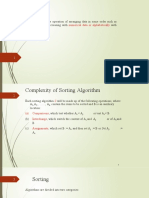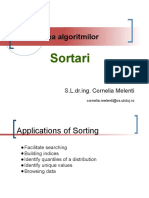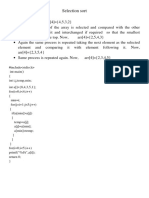0% found this document useful (0 votes)
5 views15 pagesSorting & Searching Algm
The document provides an overview of sorting and searching algorithms, detailing various types such as selection sort, bubble sort, and insertion sort, along with their complexities and implementations. It also introduces search algorithms, including linear and binary search, highlighting their efficiencies and use cases. Additionally, it touches on tree data structures, explaining their hierarchical nature and node relationships.
Uploaded by
mekdim292Copyright
© © All Rights Reserved
We take content rights seriously. If you suspect this is your content, claim it here.
Available Formats
Download as PDF, TXT or read online on Scribd
0% found this document useful (0 votes)
5 views15 pagesSorting & Searching Algm
The document provides an overview of sorting and searching algorithms, detailing various types such as selection sort, bubble sort, and insertion sort, along with their complexities and implementations. It also introduces search algorithms, including linear and binary search, highlighting their efficiencies and use cases. Additionally, it touches on tree data structures, explaining their hierarchical nature and node relationships.
Uploaded by
mekdim292Copyright
© © All Rights Reserved
We take content rights seriously. If you suspect this is your content, claim it here.
Available Formats
Download as PDF, TXT or read online on Scribd
/ 15




























































































